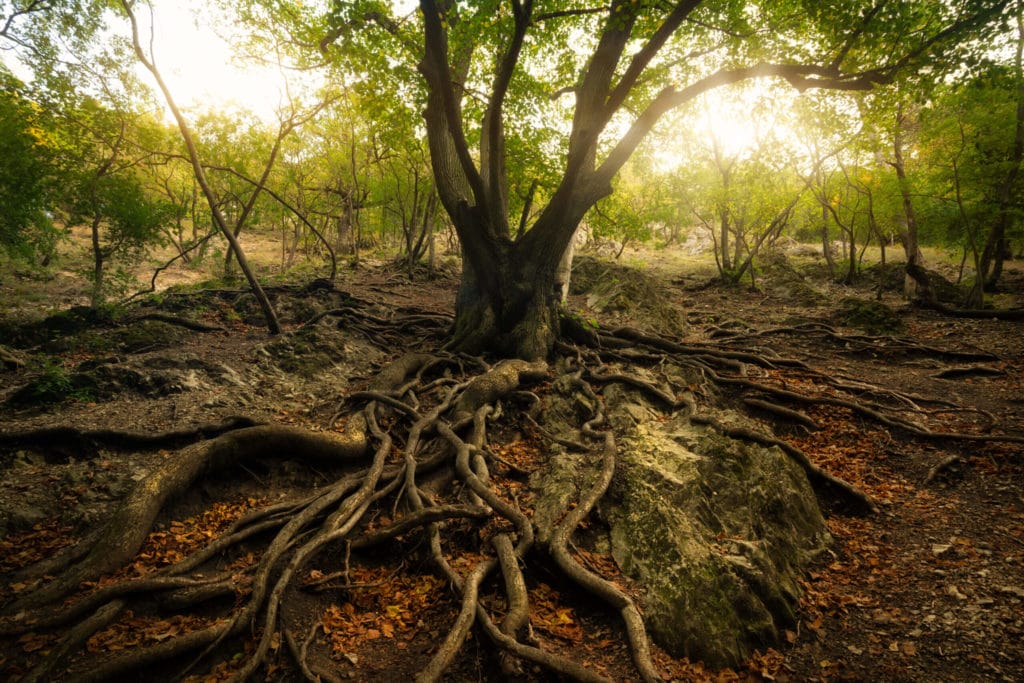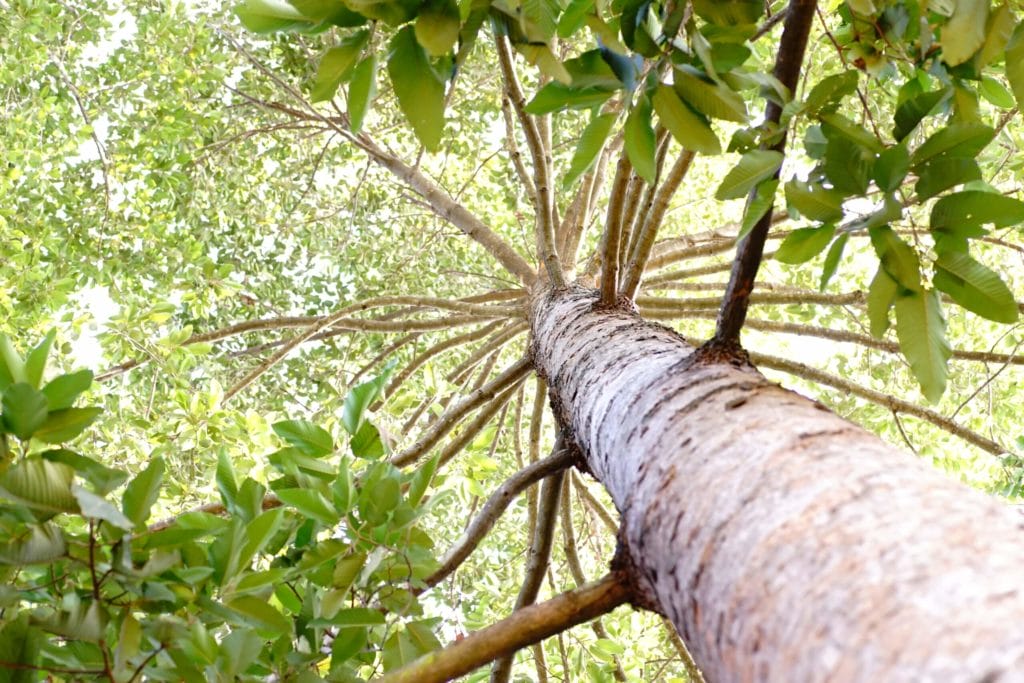There are more than 3.04 trillion trees worldwide. These woody perennial plants are vital for our livelihood and the health of our planet. Not only do trees provide us with crucial amounts of oxygen and filter the air, but they also provide lush habitats for wildlife, and are intricate to the earth’s delicate ecosystem.
While you may only think of that majestic oak in your yard as a stunning lawn ornament, it is so much more. Understanding the basic anatomy of a tree, including its roots, trunk, branches, and leaves, gives you a deeper appreciation and enables you to provide better care for them. Not only that, but knowing how to properly maintain the trees on your property can save you money and keep your plandscape looking great all year long.
The tree-trimming experts at Green Leaf Zone are here to explain everything you need to know about the different parts of a tree.
Roots: A Strong Foundation
Roots are the parts of a tree that are generally not visible. Growing deep underground, tree roots absorb water and vital nutrients from the soil and transport them to the rest of the tree. During the winter, the roots act as storage containers for essential food reserves that the tree needs when it’s time to produce foliage in the spring. Moreover, strong roots securely anchor the above-ground portions of the tree in place, allowing it to grow and thrive.
The root system includes large, permanent roots (which provide anchorage), and smaller, temporary feeder roots. The tiny roots are the primary absorbers of nutrients and water, and only function for a few years.
Even though you can’t see all of a tree’s root system, it’s still crucial that you maintain them. Tree roots grow in irregular patterns and can extend as much as three times the size of the tree’s crown, or leafy area. Thick roots from older trees can burrow underneath your yard. While roots are generally not a huge threat to your property, they can potentially grow into your septic tank. This is because high levels of moisture can be found there. The roots can destroy your septic tank and pipes, potentially causing a septic backup.
When planting new trees, always plant them in areas far away from your septic tank.
Trunk: The Most Important Feature
Most folks know what a tree trunk looks like. But what exactly does it do? The trunk, also known as the bole, is the wooden axis of the tree. A critical component for tree identification and age, the trunk starts at the root collar (or where the roots meet the trunk) and helps the tree’s foliage access the sunlight it needs to make food.
The trunk acts as the tree’s nutritional “highway system” and transports water and nutrients from the roots to all other parts of the tree. The trunk also supports the tree’s limbs and branches. Tree limbs are the trunk’s primary diversions. The branches are the smaller outgrowths where the flowers, fruits, and leaves grow.
You can determine a tree’s approximate age by the annual rings found within its trunk. These rings are the result of variations in growth rate.
If you’ve recently cut down a tree on your property, you may still have an unsightly stump left over. The stump, or base of the trunk, can be quite the eyesore. Luckily, Green Leaf Zone specializes in stump removal services. We’ll efficiently remove the stump to make your lawn look gorgeous again. Our technicians also offer the following services:
- Tree trimming and pruning
- Tree removal
- Brush clearing
- Stump grinding
If you need a stump removed, contact Green Leaf Zone today at 818-452-3470.
Crown: Aids in Aid Filtration
Did you know that trees “eat” the carbon dioxide humans exhale? In return, they provide us with the oxygen we need to survive. A tree converts carbon dioxide into oxygen in its crown, or where it holds its leaves. Another important job of a tree’s crown is photosynthesis. This term is the process of transforming the sun’s heat energy into tree food. Photosynthesis literally means creating something new (synthesis) using light (photo).
A cluster of tree crowns is known as a canopy. Tree industry experts refer to the outside edges of the canopy as the “drip line” because it’s where the trees will absorb the most nutrients and water.
As with the tree roots, it’s a smart idea to properly maintain your tree’s branches and limbs. Overgrown branches can wreak havoc on your roof and gutter. Additionally, they can severely damage your home if they come crashing down during a severe storm.
Green Leaf Zone proudly offers tree trimming services to the communities of Los Angeles County. If you’re located in our service areas, we can quickly help you today!
Leaves: The Lovely Foliage
Leaves are another part of a tree that we’re all well aware of. Typically green in color, the leaves are a tree’s little food factories. Fueled by sunlight, they use water and carbon dioxide to make sugar.
Keep Your Trees in Tip-Top Shape

If you need to maintain your trees, or even cut one down, call the tree trimming experts at Green Leaf Zone today. We provide high-quality tree maintenance services to the
communities of Los Angeles County. Our team will work closely with you to provide fantastic services to preserve your landscape and protect your property.
To learn more or to get your FREE QUOTE, contact us today by calling 818-452-3470. We look forward to helping you keep your trees in peak condition!





